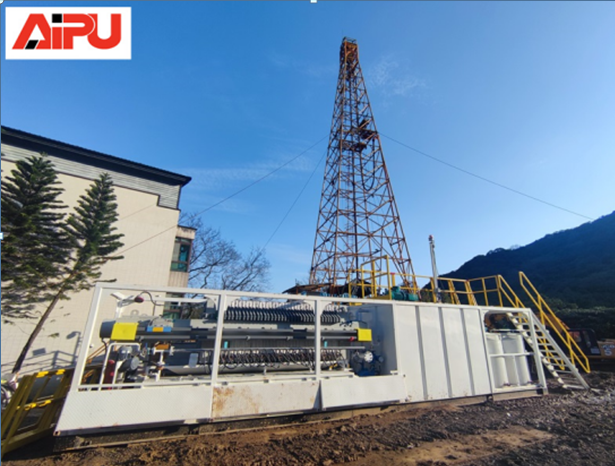Ensuring Quality and Efficiency in Drilling Operations
In the oil and gas industry, the relationship between solids control systems and drilling performance is of paramount importance. A well - functioning solids control system can significantly enhance the overall efficiency and effectiveness of the drilling process.
Understanding Solids Control Systems
Solids control systems are designed to separate and remove unwanted solids from the drilling fluid, also known as drilling mud. These systems typically consist of several components, including shale shakers, desanders, desilters, and centrifuges. The shale shaker is the first line of defense, removing large cuttings from the mud. Desanders and desilters then take out medium - sized and fine solids respectively. Centrifuges are used for the final separation of ultra - fine solids. By removing these solids, the drilling fluid can maintain its desired properties, such as density and viscosity.
Impact on Drilling Fluid Properties
The properties of the drilling fluid are crucial for successful drilling. When a solids control system effectively removes unwanted solids, the density of the drilling fluid can be precisely controlled. This is essential because the right density helps to prevent wellbore collapse and blowouts. Moreover, maintaining the proper viscosity of the drilling fluid is also important. A well - regulated viscosity allows the fluid to carry cuttings to the surface efficiently. If the solids content is too high, the viscosity may increase uncontrollably, leading to higher pump pressures and reduced drilling speed.
Enhanced Drilling Equipment Lifespan
Unwanted solids in the drilling fluid can cause significant wear and tear on drilling equipment. For example, abrasive solids can damage drill bits, pumps, and other downhole tools. A good solids control system reduces the amount of these abrasive solids in the fluid, thereby extending the lifespan of the equipment. This not only saves on the cost of frequent equipment replacement but also reduces downtime for maintenance and repairs. With longer - lasting equipment, the drilling operation can proceed more smoothly and continuously.
Improved Drilling Speed and Safety
An efficient solids control system directly contributes to increased drilling speed. When the drilling fluid is clean and has the right properties, the drill bit can penetrate the rock more easily. This results in faster drilling rates and shorter well construction times. In addition, a well - maintained solids control system enhances safety. By preventing wellbore instability and blowouts, it protects the drilling crew and the environment. The proper removal of solids also reduces the risk of equipment failures that could lead to dangerous situations.
In conclusion, the synergy between solids control systems and drilling performance is undeniable. A well - designed and properly operated solids control system is essential for optimizing drilling efficiency, protecting equipment, and ensuring safety in the oil and gas drilling process.

Understanding Solids Control Systems
Solids control systems are designed to separate and remove unwanted solids from the drilling fluid, also known as drilling mud. These systems typically consist of several components, including shale shakers, desanders, desilters, and centrifuges. The shale shaker is the first line of defense, removing large cuttings from the mud. Desanders and desilters then take out medium - sized and fine solids respectively. Centrifuges are used for the final separation of ultra - fine solids. By removing these solids, the drilling fluid can maintain its desired properties, such as density and viscosity.
Impact on Drilling Fluid Properties
The properties of the drilling fluid are crucial for successful drilling. When a solids control system effectively removes unwanted solids, the density of the drilling fluid can be precisely controlled. This is essential because the right density helps to prevent wellbore collapse and blowouts. Moreover, maintaining the proper viscosity of the drilling fluid is also important. A well - regulated viscosity allows the fluid to carry cuttings to the surface efficiently. If the solids content is too high, the viscosity may increase uncontrollably, leading to higher pump pressures and reduced drilling speed.
Enhanced Drilling Equipment Lifespan
Unwanted solids in the drilling fluid can cause significant wear and tear on drilling equipment. For example, abrasive solids can damage drill bits, pumps, and other downhole tools. A good solids control system reduces the amount of these abrasive solids in the fluid, thereby extending the lifespan of the equipment. This not only saves on the cost of frequent equipment replacement but also reduces downtime for maintenance and repairs. With longer - lasting equipment, the drilling operation can proceed more smoothly and continuously.
Improved Drilling Speed and Safety
An efficient solids control system directly contributes to increased drilling speed. When the drilling fluid is clean and has the right properties, the drill bit can penetrate the rock more easily. This results in faster drilling rates and shorter well construction times. In addition, a well - maintained solids control system enhances safety. By preventing wellbore instability and blowouts, it protects the drilling crew and the environment. The proper removal of solids also reduces the risk of equipment failures that could lead to dangerous situations.
In conclusion, the synergy between solids control systems and drilling performance is undeniable. A well - designed and properly operated solids control system is essential for optimizing drilling efficiency, protecting equipment, and ensuring safety in the oil and gas drilling process.








